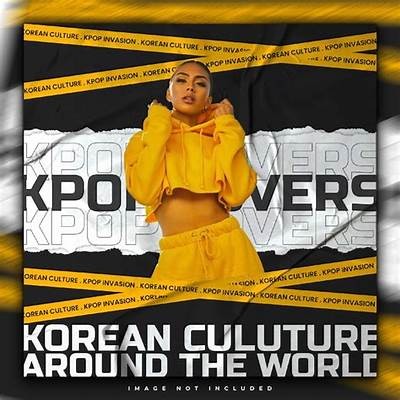Korean pop music, or K-Pop, has transformed from a regional interest into a global sensation over the last two decades. The systematic production and marketing strategies adopted by the K-Pop industry have laid the groundwork for this meteoric rise. K-Pop groups such as BTS, BLACKPINK, and TWICE have not only topped charts but also captured the hearts of millions, transcending cultural and linguistic barriers. The intricate choreography, catchy melodies, and visually stunning music videos contribute to K-Pop's unique appeal, turning it into a cultural phenomenon that continues to grow.

The phrase "Midas touch" aptly describes the influence that K-Pop has exerted on contemporary music across genres. Artists globally have begun incorporating elements of K-Pop into their work, whether it's through the use of catchy hooks, bold fashion statements, or innovative choreography. Collaborations between K-Pop idols and Western artists further serve as significant milestones, blending cultural elements and expanding audiences. This fusion exemplifies how K-Pop is shaping not only musical styles but also the broader entertainment landscape.

Social media platforms like Twitter, Instagram, and TikTok play a pivotal role in the global reach of K-Pop. Fans, often referred to as "stans," utilize these platforms to promote their favorite artists, create fan works, and share their enthusiasm with others. Viral challenges, such as dance challenges inspired by K-Pop choreographies, have further played into the hands of this genre, leading to a exponential increase in visibility. The accessibility of music through streaming services allows fans from all corners of the globe to interact and engage with K-Pop culture, reinforcing its growing influence.

K-Pop music videos are a sensory overload, filled with elaborate sets, intricate choreography, and high-fashion aesthetics. Each video is a meticulously crafted piece of art, often telling a story or conveying a particular theme. This emphasis on visual appeal creates an additional layer of engagement that helps to attract viewers and retain their interest. The production quality is often compared to that of Hollywood films, indicating the level of investment that companies are willing to make in their artistry.

While K-Pop songs often include a mix of Korean and English lyrics, their themes of love, friendship, and empowerment resonate with a diverse audience. The ability to weave personal experiences with universal themes is one of K-Pop's greatest strengths. Some groups tackle social issues, mental health, and self-acceptance, allowing listeners to find solace in their music. This blend of specificity and universality enhances emotional connections while making the music accessible even to those unfamiliar with the language.

The commercial model of K-Pop is significantly different from Western music industries, often relying on a mix of rigorous training, curated images, and tightly controlled releases. Trainees undergo years of preparation before debuting, ensuring that they are market-ready. This system results in polished acts that are expertly crafted to appeal to a global audience. Additionally, the marketing strategies employed—ranging from social media campaigns to fan interactions—ensure that K-Pop remains relevant and maintains a strong fanbase. K-Pop's Influence on Fashion Trends
K-Pop has also made a pronounced impact on fashion trends worldwide. The unique styles of K-Pop idols often set trends that influence clothing choices in various cultures. Collaborations with fashion brands and appearances in fashion weeks further underscore the genre's significant role in shaping modern style. Fans eagerly adopt these trends, blending K-Pop aesthetics into their daily wardrobes, demonstrating how music can drive cultural fashion movements. The Future of K-Pop
As K-Pop continues to evolve, it remains to be seen how it will further influence the global music scene. The potential for growth in markets previously untapped can redefine music consumption. With increasing visibility, the genre may pave the way for more cross-cultural exchanges within the music industry. Moreover, as newer generations of artists emerge, we can anticipate new experimental soundscapes that might further challenge the boundaries of contemporary music. Conclusion: K-Pop's Enduring Legacy
In conclusion, the enigmatic influence of K-Pop through the hands of Midas extends beyond mere musicality; it encapsulates cultural exchange, innovative marketing, and evolving artistry. The genre has transformed the music landscape, setting new standards and expectations for artists worldwide. As it continues to thrive, K-Pop not only redefines what it means to be a global superstar but also reaffirms music's power to connect us all.